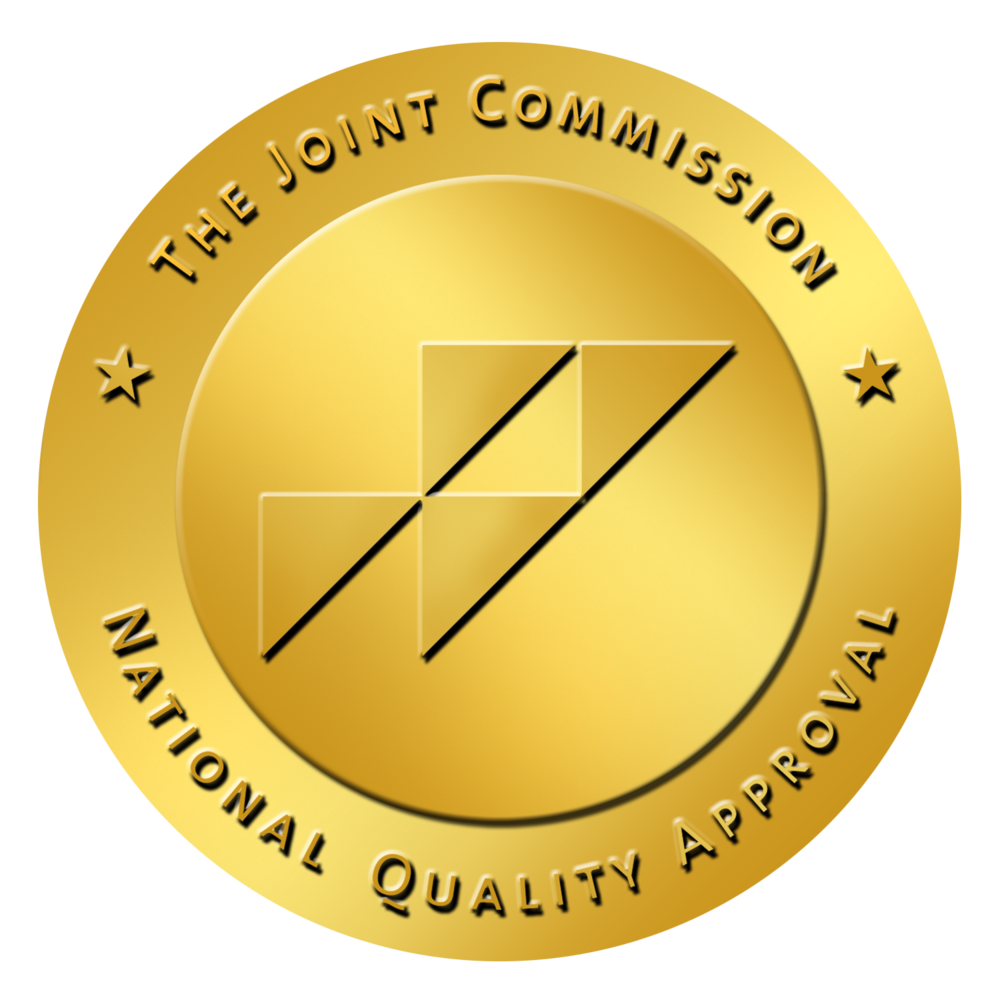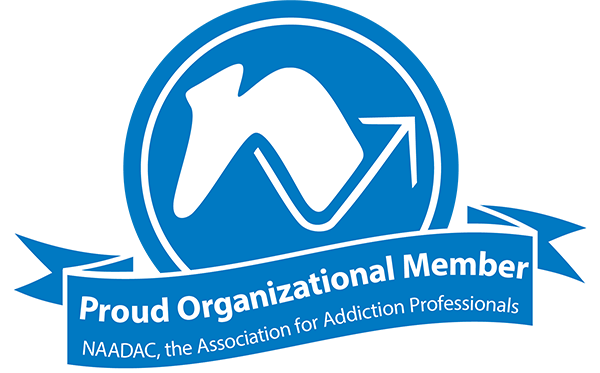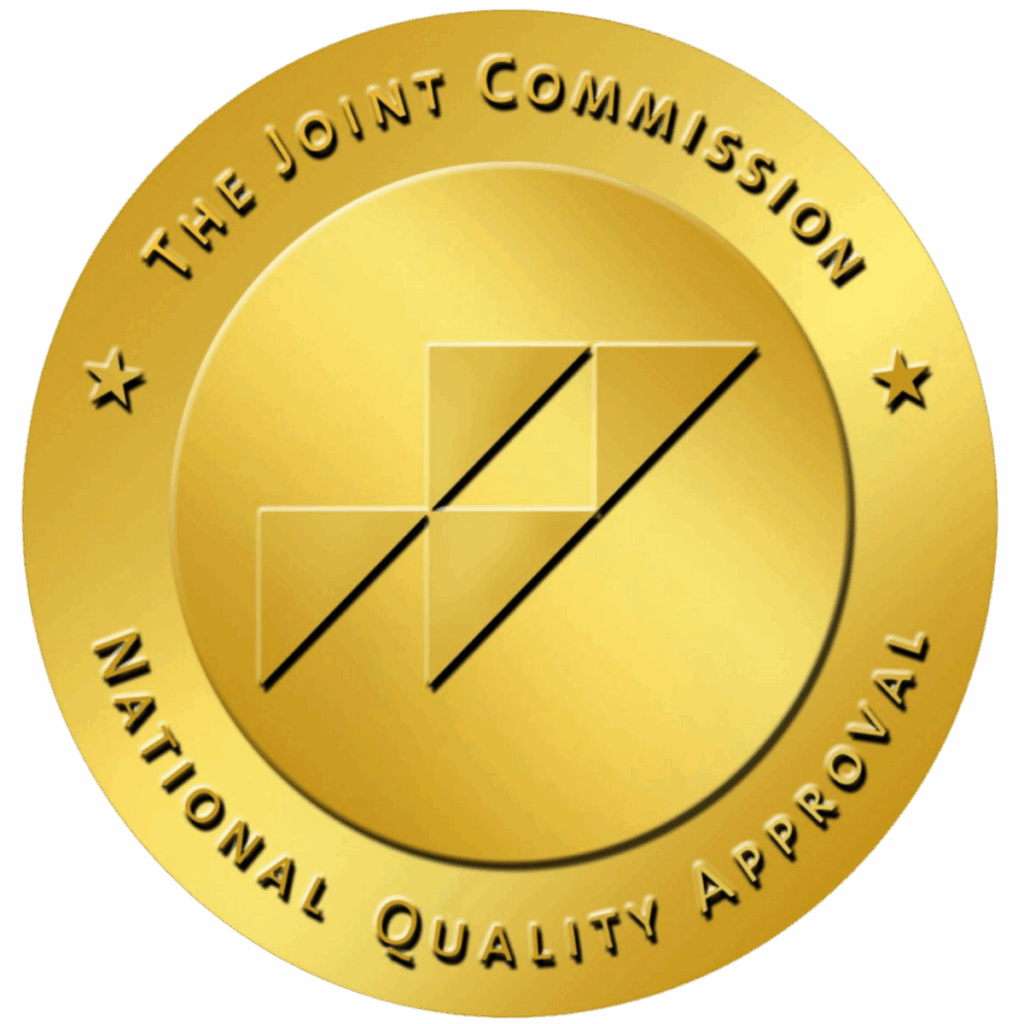If you’ve served in combat or placed yourself in harm’s way to protect and serve others, one of the most distressing parts of living through explicitly traumatic moments is that the more traumatic an experience, the more difficult it can be to reconcile.
But our brains have a remarkable ability to heal themselves from trauma — more than we may realize.
Eye Movement Desensitization and Reprocessing Therapy, or EMDR, is designed for this very reason — to help you recall traumatic memories, thoughts and emotions by lessening the emotional, often visceral impact they may have. A revolutionary trauma therapy to treat PTSD (Post-Traumatic Stress Disorder), EMDR employs a unique series of eye movement desensitization and reprocessing techniques that work with your own natural processes to slowly and safely process past trauma.
What Is EMDR?
EMDR is a type of psychodynamic therapy developed in the late 1980s by psychologist Francine Shapiro. While walking one day in a park, Shapiro made the connection that the movements her eyes naturally made while observing the natural surroundings seemed to minimize — and desensitize — her painful memories.
Shapiro discovered that by combining a cognitive component, this new type of therapy, abbreviated as EMDR, became a lifeline for people suffering from trauma. “After trauma, people with PTSD often have trouble making sense of what happened to them,” says the National Center for PTSD. “EMDR helps you process the trauma, which can allow you to start to heal.”
Look at how your brain operates and stores memories seamlessly under regular circumstances. But during times of stress or traumatically triggering events, the brain can essentially shut off, storing away traumatic repressed memories in a place that’s hard to access. When a traumatic event occurs, it can overwhelm the brain’s natural ability to process information, leaving the memory and its associated sights, sounds, and feelings effectively frozen, sometimes making it feel like being back in the traumatic moment.
“EMDR therapy helps the brain process these memories and allows normal healing to resume,” says the EMDR International Association (EMDRIA). “The experience is still remembered, but the fight, flight or freeze response from the original event is resolved.”
“Trauma is like a wound that your brain hasn’t been allowed to heal,” says the Cleveland Clinic. “Because it didn’t have the chance to heal, your brain didn’t receive the message that the danger is over.”
In the hands of EMDR-certified therapists, EMDR therapy focuses on remedying this by helping your brain reprocess and “unstick” those traumatic memories that can remain buried or repressed. Think of like how the mind can heal from psychological trauma much like the body recovers from physical trauma.
What Does EMDR Treat?
EMDR is widely considered a strong treatment for a number of mental health conditions and can successfully treat:
- Trauma (including post-traumatic stress disorder, PTSD, and complex PTSD)
- Anxiety disorders (generalized anxiety disorder, panic attacks, and phobias) necessitating EMDR for anxiety
- Depression
- Personality disorders (such as bipolar and borderline personality disorders)
- Dissociative disorders
- Obsessive-compulsive disorders
- Eating disorders
- Drug and alcohol addiction recovery
- Grief and loss
- Chronic pain and illness
“EMDR therapy does not require talking in detail about the distressing issue or completing homework between sessions,” notes EMDRIA. “EMDR therapy, rather than focusing on changing the emotions, thoughts or behaviors resulting from the distressing issue, allows the brain to resume its natural healing process.”
The Eight Phases of EMDR
EMDR counseling sessions follow a thoughtfully structured, 8-phase trajectory:
History and Planning Phase
Your first EMDR session is all about gathering intelligence. It’s an opportunity for your therapist to get to know you and start collaboratively mapping out your treatment goals. It’s an intake session where you’ll begin examining your ideal treatment targets; according to the American Psychological Association (APA), these can include past traumatic events and memories, your current situation and any future goals you might have.
Preparation Phase
A first follow-up EMDR is when the preparatory phase of therapy begins in earnest. Here, your EMDR specialist dives in and explains in detail the EMDR process — what the fundamentals and mechanics are and how its purpose-driven design can help you overcome trauma. You’ll gear up for subsequent sessions and know what to expect; plus, your therapist will begin to teach some initial stress-reduction techniques like deep breathing, visualization or meditation as initial coping skills, notes the APA.
Assessment Phase
Not to be confused with the first planning phase where your treatment goals are assessed, this third phase of EMDR therapy involves the activation of traumatic memories, some which may not be evident to you. At the start of a session, they’ll ask a few brief questions to identify the negative thoughts, imagery, feelings or sensations you might have and make you cognizant of them.
Desensitization Phase
The “D” and “R” of EMDR embody two goals: to help desensitize your traumatic memories and triggers and reprocess them so they gradually hold fewer negative associations. This desensitization phase is the first of three reprocessing phases, notes the APA, where the active part of therapy begins over the course of a given session.
Your therapist will use what’s called bilateral stimulation, a technique where you’re asked to recall an upsetting event while following, with your eyes, a series of guided imagery movements, like your therapist’s finger, a pen, or a light, as it slowly moves back and forth for about 30 seconds. Just as Dr. Shapiro discovered, this process of eye movements and cognitive stimulation can have a profoundly calming effect, enabling ease of recalling past trauma. Over time, as you continue with bilateral stimulation sessions, distress you feel from the memory will decrease — your therapist, according to the ADA, marks this on two scales, a Subjective Units of Distress Scale (SUDS), from 10 (most disturbed) until you reach zero (not disturbed), along with what’s called a VOD, or Validity of Cognition.
Installation Phase
As bilateral stimulation continues and you become more comfortable recalling and recounting traumatic experiences, without judgment or fear, it becomes time to start “installing” and reinforcing newer, more positive beliefs in yourself. This can happen in one session or over the course of several.
A combat veteran, police officer, or EMT may carry immense guilt over their perceived inability to save someone’s life or blame themselves for a negative outcome in an emergency event. This fifth phase of EMDR ultimately solidifies the positive, true perspective you’ll carry forward about yourself as truth. For example, a destructive thought born from a traumatic call or firefight like, “It was my fault, and I failed my team/battalion,” is replaced with, “I did the best I could under impossible circumstances, and I care about helping people.” Under the SUDS scale, you’re asked to rate how you feel.
Body Scan Phase
Trauma can be stored deep in the body’s physical memory centers — feeling jumpy, easily startled, and on edge/high alert, muscle tension, dissociative behavior, anxiety, and sleeplessness from disturbing nightmares.
The body scan phase of EMDR implores you to take notice of your body. Your therapist will guide you through a mental scan of your body to pinpoint any remaining tension or discomfort. Do you still feel those symptoms after relaxation techniques aid your perspective on your trauma, and from advocating for yourself with self-affirmations? This process is like a final systems check. If any tension remains, it becomes a chance for some additional bilateral stimulation.
Closure Phase
Every EMDR session ends with a clear, controlled debrief to help you return to a grounded, calm place, centered in the present. If you’re in outpatient therapy, where you return home after therapy is done for the day, closure is important to ensure stability before re-engaging back into the world. Once you’ve arrived at a state of calm and neutrality after your body scan, your therapist will make sure you’re at a 0 on the SUDS scale and a 7 on the VOD scale.
Reevaluation Phase
Each new EMDR session begins with the eighth phase, reevaluation. Here, your therapist will check in on your progress. You’ll both talk about reprocessed negative emotions and make sure that your overall psychological frame of mind is in a positive place. From there, therapy continues.
What To Expect in EMDR Therapy?
One important thing to expect from EMDR is that you remain in control of changing your perspectives and responses about the role trauma plays in your life. And EMDR therapy illustrates that you have power over your mind and the control it has over trauma — your mind and body’s inherent, internal abilities to heal themselves.
“Repeated studies show that by using EMDR therapy people can experience the benefits of psychotherapy that once took years to make a difference,” says the EMDR Institute. “It is widely assumed that severe emotional pain requires a long time to heal. EMDR therapy shows that the mind can in fact heal from psychological trauma much as the body recovers from physical trauma.”
During a given session, your therapist will create a safe and supportive space, guiding you through most of the eight phases (particularly assessment through reevaluation). You can expect to identify a target memory, focus on it while experiencing bilateral stimulation and allow your brain to make new, healthier connections until the memory is no longer problematic in your day-to-day life.
What Are the Benefits of EMDR Therapy?
There are several patterns and advantages of EMDR for anyone looking to overcome trauma or PTSD:
- It’s a transformative treatment tailor-made for veterans who may be reluctant to talk about their traumatic experiences, particularly those who have experienced traumatic events during tours of duty.
- Studies show that, in many cases, EMDR is more effective than cognitive-behavioral therapy (CBT) or other similar forms of trauma therapy.
- EMDR is empowering, helping you reframe negative self-beliefs into more positive, realistic ones.
- A present-focused therapy, EMDR relies on looking forward from past trauma.
- It’s also a holistic form of therapy since it involves addressing psychological and physical symptoms, two elements not always combined in other therapies.
What Is the Goal of EMDR?
EMDR is not a black-and-white type of therapy. That’s to say the goal isn’t to have traumatic memories and simply erase them, but to acknowledge and accept them and put you in control over how you process and make peace with trauma. Recovering from post-traumatic stress is a deeply personal journey that requires individualized care, grounded in research and compassion. The treatment of PTSD has evolved significantly in recent years, with organizations like the American Psychiatric Association and the Department of Veterans Affairs issuing updated treatment guidelines to reflect the most effective treatment approaches. These clinical practice guidelines emphasize the use of research-based therapies, such as EMDR for PTSD, prolonged exposure, and cognitive behavioral therapy, to reduce the distress associated with traumatic stress and related conditions like acute stress disorder or panic disorder.
Traumatic memories may remain, but EMDR teaches you how to lessen their grip on your mental health, avoid substance abuse, and learn how to avoid becoming triggered by them and better handle future traumatic moments.
Frequently Asked Questions about EMDR
Yes, as an research-based treatment proven through years of research and real-life success stories, EMDR is effective in treating trauma and PTSD. The National Center for PTSD finds that most people see a noticeable reduction in PTSD symptoms after just a few sessions, and EMDR is endorsed by numerous health organizations, from the APA to the World Health Organization to the National Alliance on Mental Illness, among others.
Other forms of mental health therapy, especially CBT, work in treating conditions like depression or anxiety by making the tangible connection between one’s mind, their thoughts and actions. By reframing an inherently negative mental narrative, you can alter how you feel and act in more positive ways while minimizing your symptoms.
EMDR is a bit different because it harnesses that natural neurological healing process, making a similar connection between the amygdala, hippocampus, and prefrontal cortex — through bilateral stimulation, you allow each one to work in tandem to desensitize, reprocess and ultimately heal from trauma.
There’s no reason why you should choose other therapeutic approaches over others if different types of therapy can ideally work together to set you on the path to recovery. EMDR is a specific trauma-informed care streamlined for trauma, and while it can be a standalone treatment for PTSD, it’s perfectly fine — even encouraged — to try other types of therapy, like trauma focused cognitive behavioral therapy, especially if you have other co-occurring issues like drug and alcohol addiction and trauma or other mental health concerns.
Numerous studies show that EMDR therapy for PTSD is overwhelmingly effective. One study from the EMDR Institute notes that among a group of combat veterans struggling with PTSD, 77.7% no longer met the clinical criteria for the condition after a dozen EMDR sessions, where participants responded better to, and were more likely to stay the course, than by taking other types of psychotherapy.
A typical EMDR therapy session, notes EMDRIA, usually lasts anywhere from 60 to 90 minutes. The overall length of an EMDR treatment plan can vary from person to person, though most begin to see improvements within a few weeks. However, EMDRIA says that speed should not be the goal of EMDR, and that new needs can change the duration of therapy.
EMDR at Aliya Veterans
Our Valor Program incorporates EMDR into our trauma-informed care for veterans — a specialized track to meet the needs of those who have served out country who suffer from the effects of not only PTSD from combat exposure, but alcoholism, drug abuse or other mental health concerns. EMDR helps you process — and reprocess — the root causes of PTSD, making you more resilient, stronger and more present to live life.
EMDR Treatment Near Me
Each of Aliya Health Group’s mental health treatment facilities across eight states offers EMDR therapy. If you believe you have PTSD, don’t ignore it. Don’t overlook the signs in a loved one who has served in combat or been in law enforcement or public safety.
The information on this page only touches on what EMDR can do for treatment for PTSD. The truth is that we can help answer any other questions you might have about trauma-focused therapy and set a treatment plan in motion if you’re ready to make a change in life. We’re on hand 24/7 to help, but so are the trauma-informed therapists and clinical staff who maintain a compassionate commitment to seeing you find the long-term recovery everyone needs — and deserves.
Change your life with one phone call and reach out to us today for more information on PTSD, EMDR and how it can help.
- https://www.ptsd.va.gov/understand_tx/emdr.asp
- https://www.apa.org/ptsd-guideline/treatments/eye-movement-reprocessing
- https://www.emdr.com/efficacy/
- https://my.clevelandclinic.org/health/treatments/22641-emdr-therapy
- https://www.emdria.org/podcast/emdr-therapy-for-male-veterans/
- https://www.apa.org/topics/psychotherapy/emdr-phases
- https://psychcentral.com/health/how-your-body-remembers-trauma
- https://www.emdria.org/wp-content/uploads/2022/05/BrochureAdultEnglishPrintableOption2.pdf
- https://www.ptsd.va.gov/family/docs/Family_HowHelpEMDR.pdf






